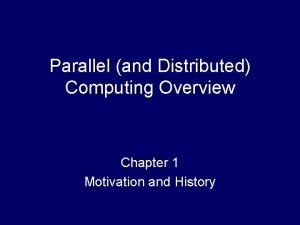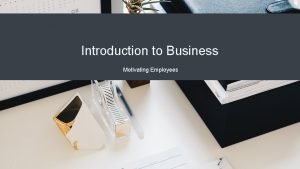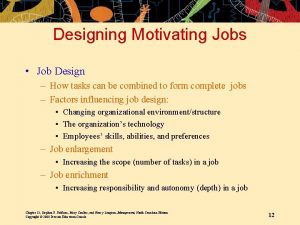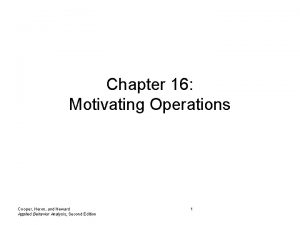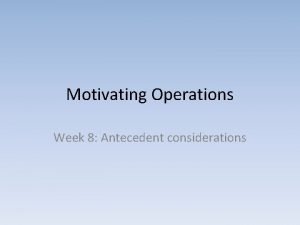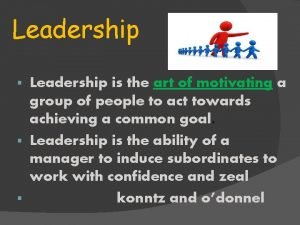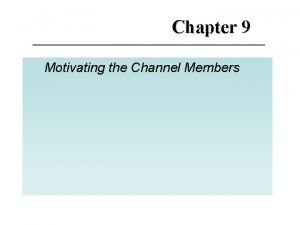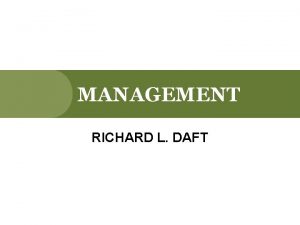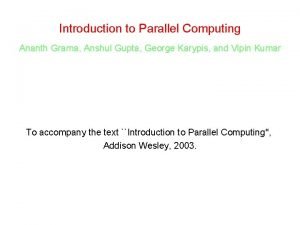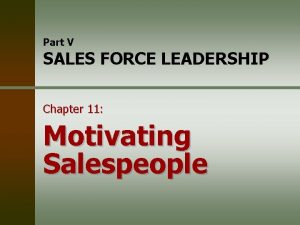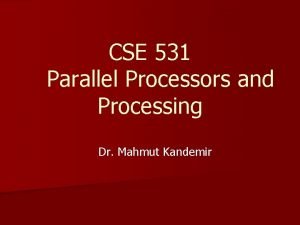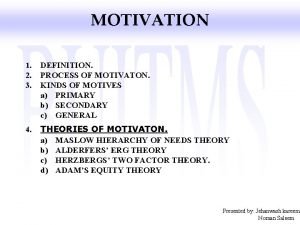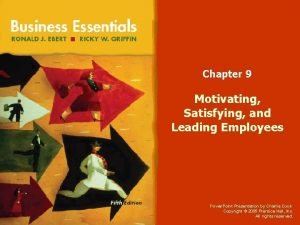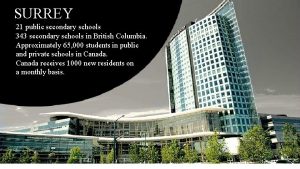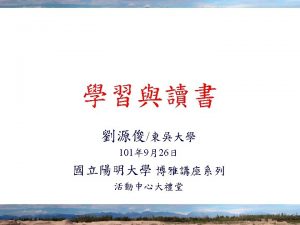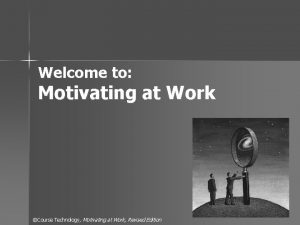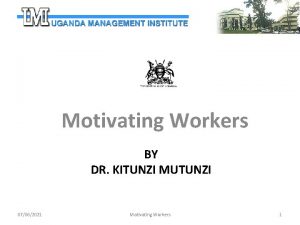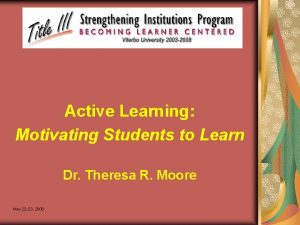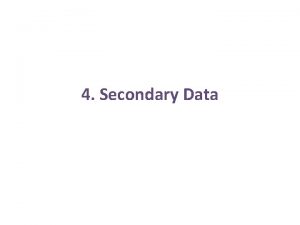MOTIVATING STUDENTS TO LEARN ECONOMICS IN SECONDARY SCHOOLS





































- Slides: 37

MOTIVATING STUDENTS TO LEARN ECONOMICS IN SECONDARY SCHOOLS Topic 4 - The Individual as Producer, Consumer and Borrower Topic 5 - The Private Firm as Producer and Employer

Conducting Interviews When conducting interviews, students will: n collect real data and develop their research skills n improve their communication skills n be able to practise social etiquette

Some suggestions on conducting interviews n Students to brainstorm possible questions to ask n Teacher to go through the suggested questions and help refine them n Students to prepare a form to record the data collected

Some suggestions on conducting interviews n Students to rehearse the process of interviewing in class first - start by introducing themselves and explaining the purpose of the interview - inform the interviewee as to how long the interview will take - describe briefly what type of information is required - ask the prepared questions

Conducting Interviews Some rules to remember: n n n be polite at all times, even when people refuse to be interviewed be fair, e. g. do not laugh or try to influence the interviewee thank the interviewee at the end of the interview

Brainstorming the Questions Data is required on the following: n Personal information (e. g. name, age, marital status) n Type of occupation n Reasons for choice of occupation n Ranking of reasons (top 3) What questions n Income per month can we ask?

Let the interviews begin!

What did we find out?

Look at the reasons. Can you categorise them?

Factors affecting an individual’s choice of occupation Wage factors Non-wage factors

Who earns the most?

How much do they earn? r e e n i g n E r e t u p m o C Manufactur ing Labourer Genera l Manag er r e k r o W l a i c o S





How much do they earn? General Manager Computer Engineer Social Worker Manufacturing Labourer S$11, 071 S$4, 165 S$2, 200 S$1, 073 What do other stats say?

Why are t here difference s in earnings? Let’s share our ideas! What do people do with their earnings?

Consumer spending, saving and borrowing n n Students can carry out interviews to find out more about how people spend/use their earnings They can also collect data by recording their own and their family members’ spending, saving and borrowing




1. According to the traditional theory of 2. the firm, the profit maximization point 3. is where ______. A. TR = TC B. AR > AC C. MC > MR D. MR = MC

2. What does the shaded area represent?

3. Which one of the following does not affect the demand for an input? A. The price of a substitute B. The demand for the final product C. The organisational structure of the firm D. The time frame

5. perfectly-competitive firm is a 4. ATrue or False? price-_______. All inputs are variable in the short-run.



Reasons for the different sizes of firms Get students to research on the history and growth of these big firms

Main reasons for the different sizes of firms n n n Different business objectives Size of the market Capital External growth Organisation

Horizontal Integration Primary Confectionery Secondary Manufacturer Tertiary Soft Drinks Manufacturer

Vertical Integration Primary Dairy Farming Cooperative Secondary Cheese Processing Plant Tertiary Vertical Integration Forward – acquisition takes place towards the market

Vertical Integration Primary Secondary Manufacturer Tertiary Retail Stores Vertical Integration Backwards – acquisition takes place towards the source

http: //www. bized. ac. uk/learn. htm

Get It Right!

Activities & Strategies n n n n Interviewing Handling real data Circle of Knowledge Quiz Simple calculation 4 Corners Rotating roles

 Motivating students to learn english
Motivating students to learn english Aims and objectives of teaching economics slideshare
Aims and objectives of teaching economics slideshare Revision techniques for kinesthetic learners
Revision techniques for kinesthetic learners Huntsville.powerschool
Huntsville.powerschool Reach schools safety schools and
Reach schools safety schools and Jose rizal love life
Jose rizal love life Level of education in malaysia
Level of education in malaysia Maastricht university economics and business economics
Maastricht university economics and business economics Mathematical vs non mathematical economics
Mathematical vs non mathematical economics Motivating parallelism
Motivating parallelism Ways of motivating employees
Ways of motivating employees Designing motivating jobs
Designing motivating jobs Unconditioned motivating operations
Unconditioned motivating operations Cooper heron and heward
Cooper heron and heward Chapter 10 motivating and satisfying employees and teams
Chapter 10 motivating and satisfying employees and teams Motivating operations definition
Motivating operations definition Sales force motivation theories
Sales force motivation theories Communating
Communating Motivating channel members
Motivating channel members Planning controlling organizing staffing and directing
Planning controlling organizing staffing and directing Motivating developers
Motivating developers Motivating employees without money
Motivating employees without money Motivating and satisfying employees and teams
Motivating and satisfying employees and teams Introduction to parallel computing ananth grama
Introduction to parallel computing ananth grama Poor maps and navigational tools
Poor maps and navigational tools Is the individual internal process that energizes directs
Is the individual internal process that energizes directs Motivating people for total quality
Motivating people for total quality Sales force motivation
Sales force motivation Motivating yourself and others
Motivating yourself and others Example of cmo-r
Example of cmo-r What evidence is there of aldi motivating its workforce
What evidence is there of aldi motivating its workforce Motivating parallelism
Motivating parallelism Want-satisfaction chain examples
Want-satisfaction chain examples Leading and motivating a team
Leading and motivating a team Directing and staffing
Directing and staffing Motivating example
Motivating example Motivating and satisfying employees and teams
Motivating and satisfying employees and teams Norm althouse
Norm althouse









